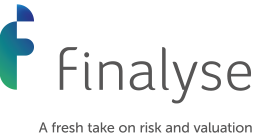Related Articles
How Finalyse can help
Reporting for Institutional Investors in Funds
There are two main options for reporting:
- Treating funds as equity, which requires holding more capital.
- Using a transparency approach, where each asset in a fund is treated individually, often leading to lower capital requirements.
To fulfill their regulatory needs, these institutions ask asset managers for comprehensive reports on their investment portfolios. These reports, called "Institutional Investors Reporting," need to be standardized and delivered promptly.
European financial institutions rely on detailed reporting from asset managers to comply with evolving supervisory laws regarding fund investments. Asset managers are often opting to outsource this task to external providers due to its complexity and to maintain focus on their core business activities.
- They may not fully understand the relevant regulations.
- Risk calculations are not their expertise.
- Dealing with derivative instruments can be complex.
- Producing these reports in-house can be time-consuming and burdensome for staff.
How does Finalyse address your challenges?
Regulatory watch:
In-depth knowledge of European and local regulationsto calculate capital requirements considering the full range of risk exposures held by institutions through investments in fund positions. Leverage on our regulatory watch department to benefit from calculation and report always compliant with the latest regulatory evolutions.
Risk Calculation and Report Automation:
Calculation layer with robust and specific calculator engines compliant with the European & local regulations. Fully automated and auditable calculation and reporting process ensuring timely distribution of your regulatory reports in the required layout/formats. The human workforce only focuses on high value-added tasks (methodological updates, validation and controls).
Managed Services:
Finalyse applies the "4-eye" principle. Each automated report is reviewed by a senior team member. This control ensures that the report is consistent, in data sources and methodology. Our support includes answering any specific question from institutional investors regarding their templates, answering questions from auditors or NCAs and first line investigations in case of rejection by supervisor.
How does it work in practice?
Insight on RWA Calculator
A dedicated calculation tool that computes Standardized Approach RWA on an entire portfolio for various configurations (CRR2, D424 (Basel IV), CRR3) with credit-risk mitigant allocation.
Tool description
For CIUs, the tool calculates risk weighted assets amounts at fund level using either the look- through approach or the mandate-based approach.
In the look through approach:
- Data is mapped/enriched with regulatory parameters (Ratings, Asset Class etc).
- Compute EAD for each underlying exposure, using the output of SA-CCR calculator for derivative exposures.
- Each underlying exposure of the fund is assigned to a risk weight based on the characteristics of the exposure (credit quality of the issuers/issue, asset class etc).
In the mandate-based approach:
- Data mapping/enrichment with regulatory parameters
- Assign the risk weights in accordance with the limits set in the Fund’s mandate
Challenges
- Performing a full look-through approach is required in order to avoid fallback to 1250% risk weight for target funds.
- Collecting mandate/fund limits for the Mandate Based Approach
- Multiple reporting formats exist to collect/report RWAs and Solvability Ratios, often with their own specifications.
- Regulatory Compliance: Keeping up with changes in financial regulations to ensure ongoing compliance is a primary challenge.
- Data Integrity and Integration: Ensuring accuracy and consistency across different data formats and sources can be complex.
- Classification of complex assets: The classification of complex assets and interpretation of the relevant shock to be applied
- Scalability: The tool must efficiently handle increasing amounts of data and users without performance degradation.
Key Features
- Funds & sub-funds’ portfolios enrichment with market data.
- Implementation of data quality checks and controls.
- Performing classifications and calculations according to reporting requirements.
- Generation of the reports in the layouts and formats required.
- Delivery of the reports by SFTP or e-mails.

Through his consultancy career, Thomas has developed a sharp expertise in financial products, data quality, processes and (regulatory) reporting. He has gained thorough experience in data modelling techniques and reporting tools when building Data Warehouse / Datamart projects & Reporting Framework for the Market Risk & ALM departments of several banking institutions. He developed a strong experience in BCBS 239 implementation projects, tackling data quality issues and putting in place data governance framework.

Marc-Louis Schmitz, Partner at Finalyse and member of the executive committee, is the founder of the independent valuation services business line.
He oversees operations, team management, and strategic development.
Known for fostering an inclusive, growth-oriented work environment, he supports a skilled team dedicated to mastering complex valuation processes, models, and best practices.
With a strong background in valuation, risk modeling, and regulatory compliance, Marc-Louis has expanded Finalyse's managed services to meet evolving regulatory and client needs.

Abishek Chopra is a seasoned Risk Management professional with over 12 years of experience in multiple areas of credit risk, especially on CRR and Basel guidelines. He has expertise in addressing complex regulatory topics such as credit risk mitigation for RWA optimization of different asset classes, Basel IV application of Whole Loan/Split Loan approaches for mortgages, SA-CCR and Securitisation.

Frans is an actuary and Financial Risk Manager with international experience in the pensions and insurance sectors. He has been specialising in actuarial valuations (AXIS), financial and regulatory reporting (IAS19, US GAAP, IFRS2, IFRS17), regulatory reporting (IORP II, Solvency II, ICS, BMA), market risk management (ALM, SAA), climate change risk management and investment consulting.

Hugo is a Principal Consultant in Finalyse Brussels. He has a wide knowledge and expertise in financial products, valuation algorithms, reporting and regulatory issues. He combines in depth knowledge of banking financial risks and regulations with a wide understanding of the data, IT infrastructure and processes underneath. Hugo has been involved in multiple Risk and Regulatory Reporting implementation projects such as RWA calculation for credit risk, EAD calculation under SACCR, automation of internal reports for ALM and implementation of data governance to comply with BCBS239. Hugo is an experienced Agile project manager who stands-out for his dynamism, adaptability and interpersonal skills.
Finalyse InsuranceFinalyse offers specialized consulting for insurance and pension sectors, focusing on risk management, actuarial modeling, and regulatory compliance. Their services include Solvency II support, IFRS 17 implementation, and climate risk assessments, ensuring robust frameworks and regulatory alignment for institutions. |

Our Insurance Services
Check out Finalyse Insurance services list that could help your business.
Our Insurance Leaders
Get to know the people behind our services, feel free to ask them any questions.
Client Cases
Read Finalyse client cases regarding our insurance service offer.
Insurance blog articles
Read Finalyse blog articles regarding our insurance service offer.
Trending Services
BMA Regulations
Designed to meet regulatory and strategic requirements of the Actuarial and Risk department
Solvency II
Designed to meet regulatory and strategic requirements of the Actuarial and Risk department.
Outsourced Function Services
Designed to provide cost-efficient and independent assurance to insurance and reinsurance undertakings
Finalyse BankingFinalyse leverages 35+ years of banking expertise to guide you through regulatory challenges with tailored risk solutions. |

Trending Services
AI Fairness Assessment
Designed to help your Risk Management (Validation/AI Team) department in complying with EU AI Act regulatory requirements
CRR3 Validation Toolkit
A tool for banks to validate the implementation of RWA calculations and be better prepared for CRR3 in 2025
FRTB
In 2025, FRTB will become the European norm for Pillar I market risk. Enhanced reporting requirements will also kick in at the start of the year. Are you on track?
Finalyse ValuationValuing complex products is both costly and demanding, requiring quality data, advanced models, and expert support. Finalyse Valuation Services are tailored to client needs, ensuring transparency and ongoing collaboration. Our experts analyse and reconcile counterparty prices to explain and document any differences. |

Trending Services
Independent valuation of OTC and structured products
Helping clients to reconcile price disputes
Value at Risk (VaR) Calculation Service
Save time reviewing the reports instead of producing them yourself
EMIR and SFTR Reporting Services
Helping institutions to cope with reporting-related requirements
Finalyse PublicationsDiscover Finalyse writings, written for you by our experienced consultants, read whitepapers, our RegBrief and blog articles to stay ahead of the trends in the Banking, Insurance and Managed Services world |

Blog
Finalyse’s take on risk-mitigation techniques and the regulatory requirements that they address
Regulatory Brief
A regularly updated catalogue of key financial policy changes, focusing on risk management, reporting, governance, accounting, and trading
Materials
Read Finalyse whitepapers and research materials on trending subjects
Latest Blog Articles
Contents of a Recovery Plan: What European Insurers Can Learn From the Irish Experience (Part 2 of 2)
Contents of a Recovery Plan: What European Insurers Can Learn From the Irish Experience (Part 1 of 2)
Rethinking 'Risk-Free': Managing the Hidden Risks in Long- and Short-Term Insurance Liabilities
About FinalyseOur aim is to support our clients incorporating changes and innovations in valuation, risk and compliance. We share the ambition to contribute to a sustainable and resilient financial system. Facing these extraordinary challenges is what drives us every day. |

Finalyse CareersUnlock your potential with Finalyse: as risk management pioneers with over 35 years of experience, we provide advisory services and empower clients in making informed decisions. Our mission is to support them in adapting to changes and innovations, contributing to a sustainable and resilient financial system. |

Our Team
Get to know our diverse and multicultural teams, committed to bring new ideas
Why Finalyse
We combine growing fintech expertise, ownership, and a passion for tailored solutions to make a real impact
Career Path
Discover our three business lines and the expert teams delivering smart, reliable support


